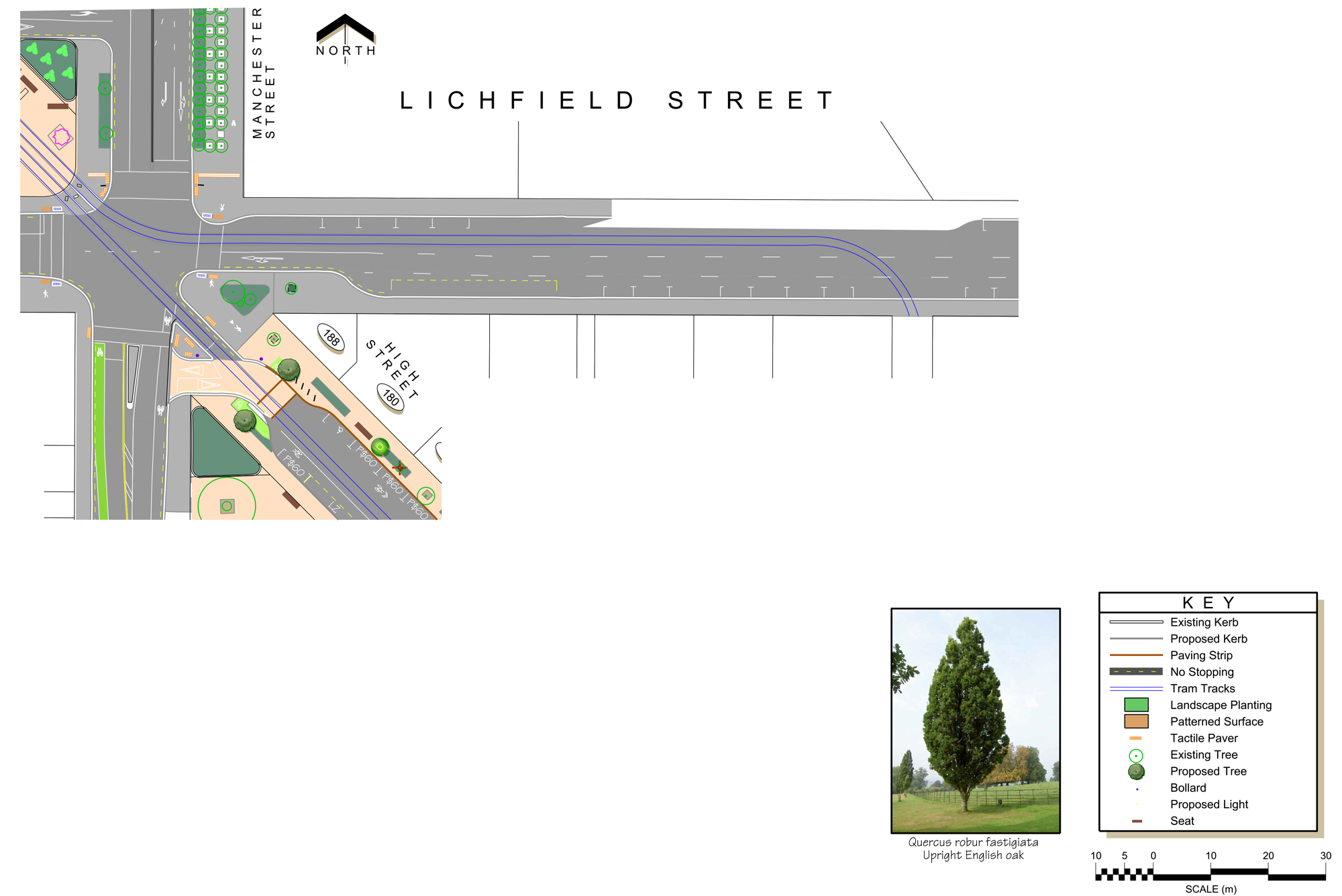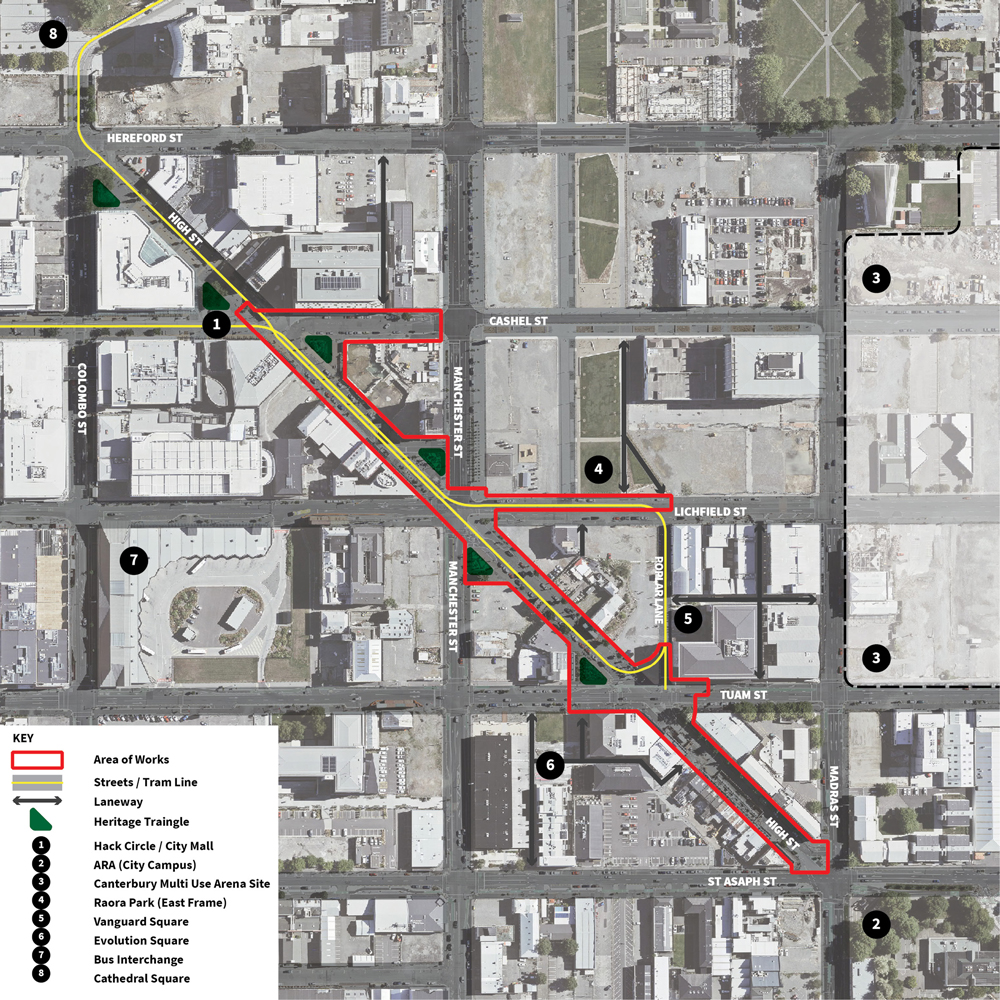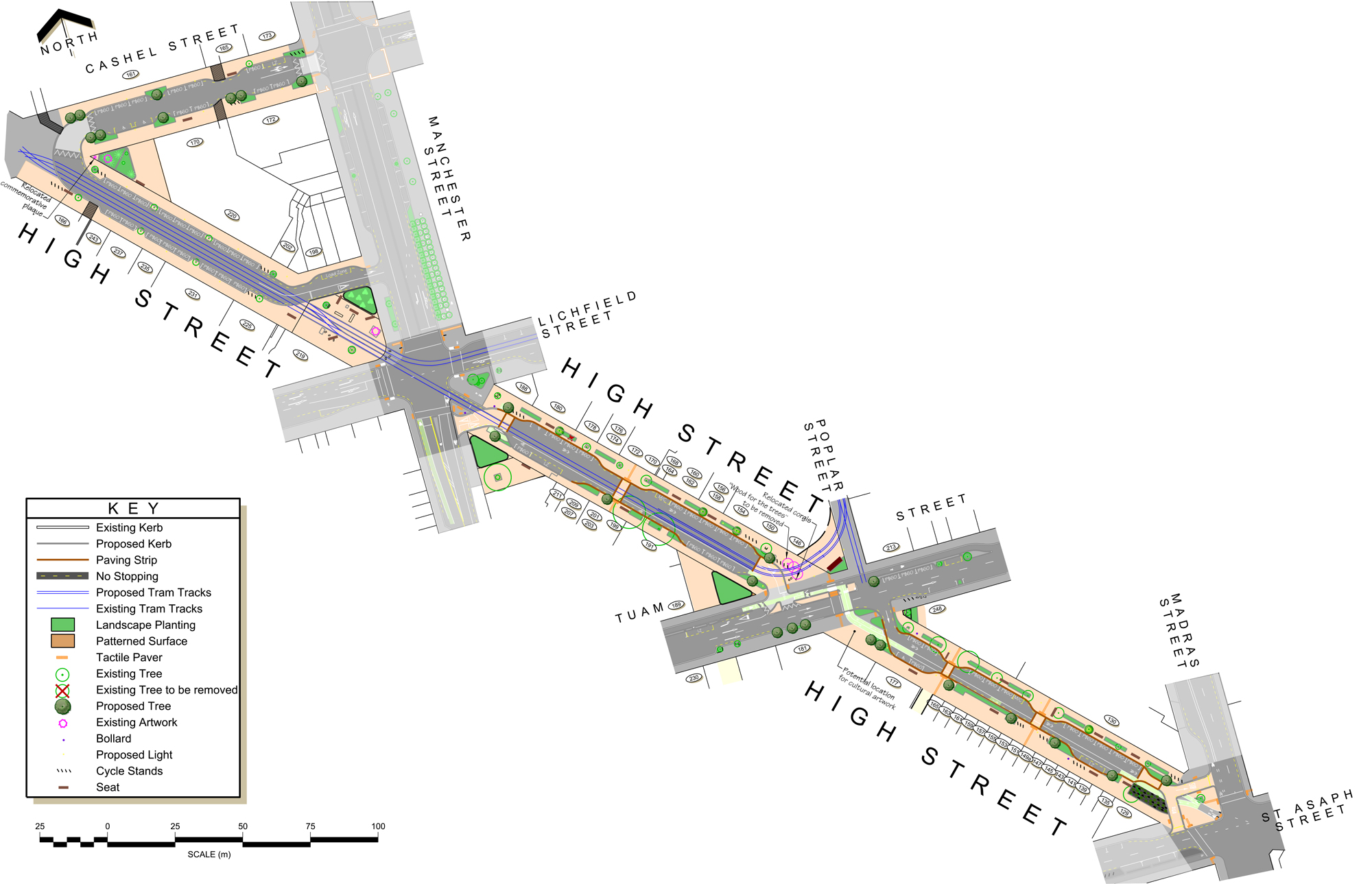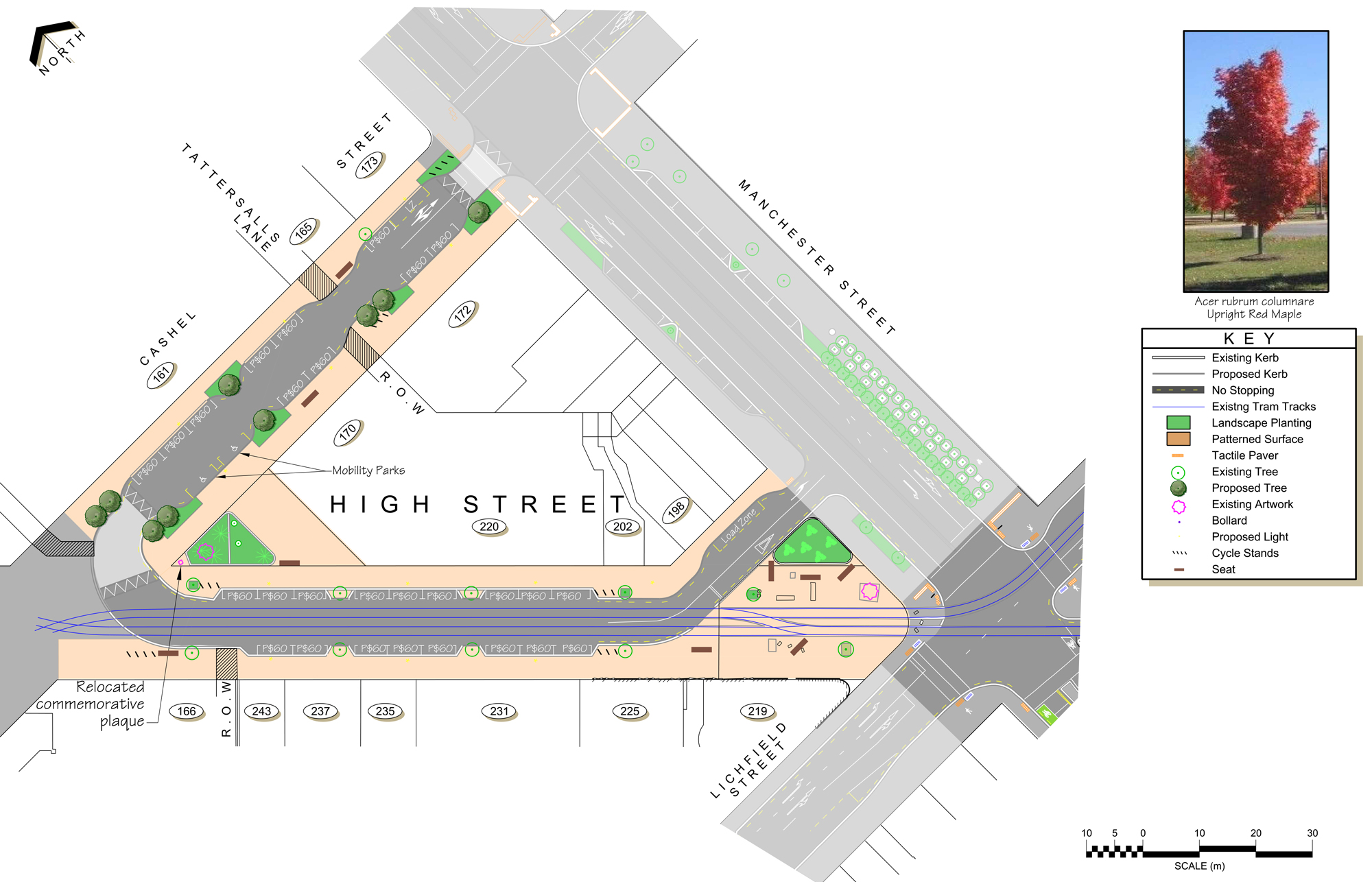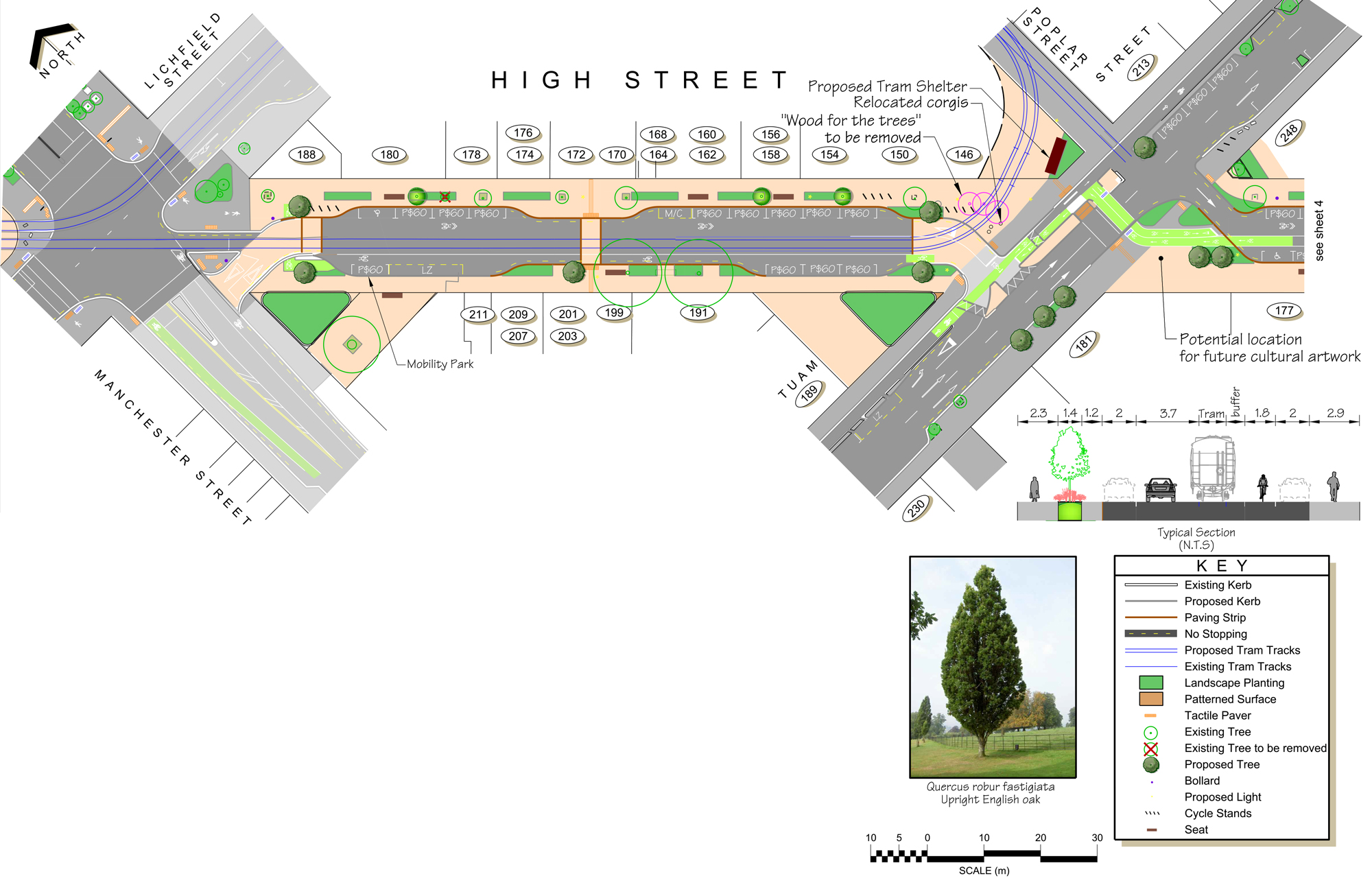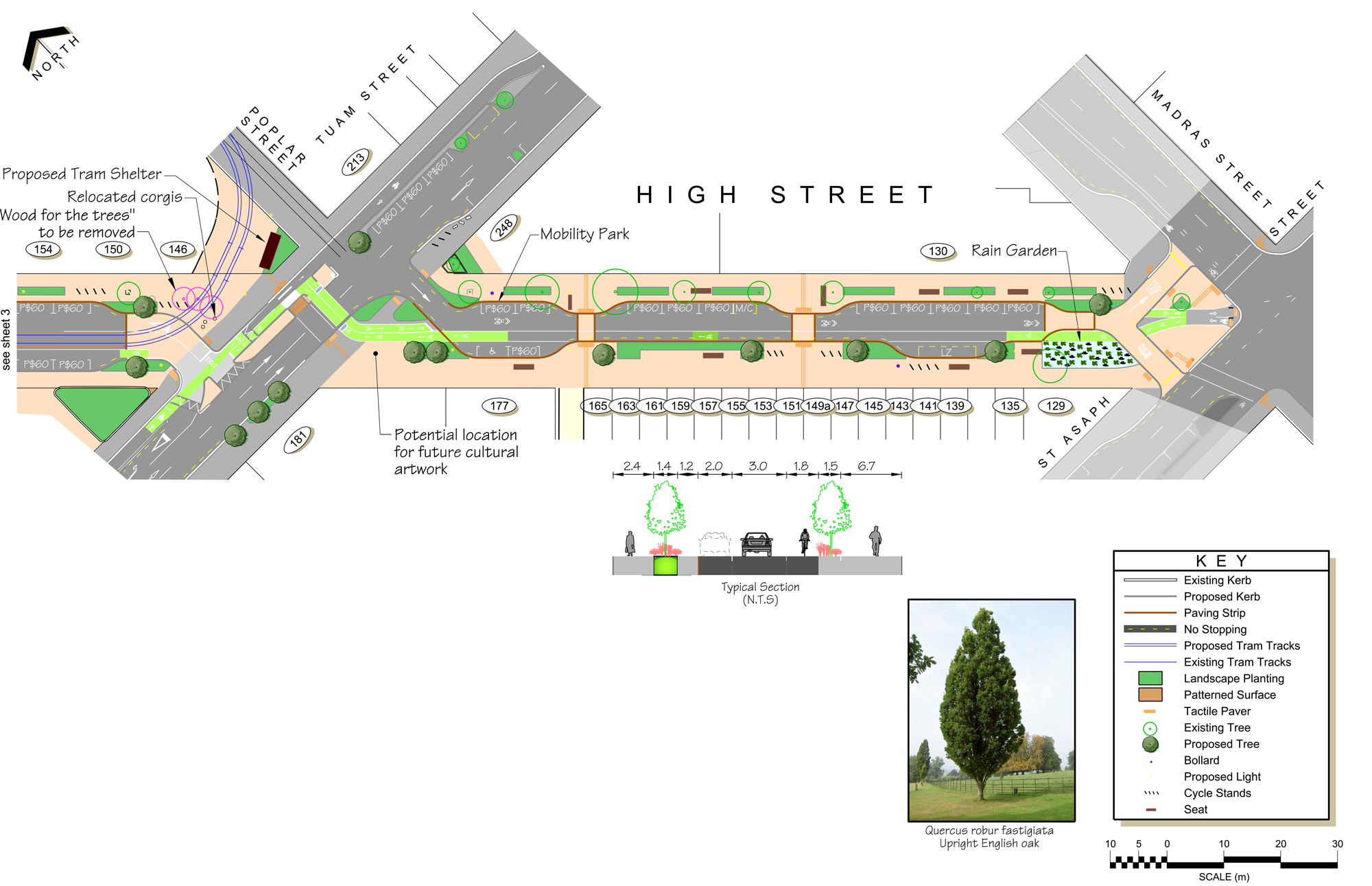Consultation
14 May-10 June 2019Information sessions
Come talk to us about the High Street project
Thursday 23 May 2019, anytime between
noon and 2pm
Epic, corner of Tuam and Manchester streets
Thursday 30 May 2019, anytime between
noon and 2pm
BreakFree on Cashel, 165 Cashel Street
Hearings and approval
Aug-Sept 2019Council elections in October 2019 may impact on this timeframe
Detailed design
Late 2019-early 2020
Construction starts
Mid 2020If the Council approves the scheme design for the High Street revitalisation, construction is expected to start mid 2020. The programme will be known following discussions with contractors and we will be aiming to minimise the period of construction.
The Council’s project team has discussed the programming of works with local businesses and property owners and will continue to work closely with them during construction to minimise disruption as much as possible.
We will be working with the contractor to maintain access to businesses during the course of the works.
Consultation
14 May-10 June 2019Information sessions
Come talk to us about the High Street project
Thursday 23 May 2019, anytime between
noon and 2pm
Epic, corner of Tuam and Manchester streets
Thursday 30 May 2019, anytime between
noon and 2pm
BreakFree on Cashel, 165 Cashel Street
Hearings and approval
Aug-Sept 2019Council elections in October 2019 may impact on this timeframe
Detailed design
Late 2019-early 2020
Construction starts
Mid 2020If the Council approves the scheme design for the High Street revitalisation, construction is expected to start mid 2020. The programme will be known following discussions with contractors and we will be aiming to minimise the period of construction.
The Council’s project team has discussed the programming of works with local businesses and property owners and will continue to work closely with them during construction to minimise disruption as much as possible.
We will be working with the contractor to maintain access to businesses during the course of the works.








